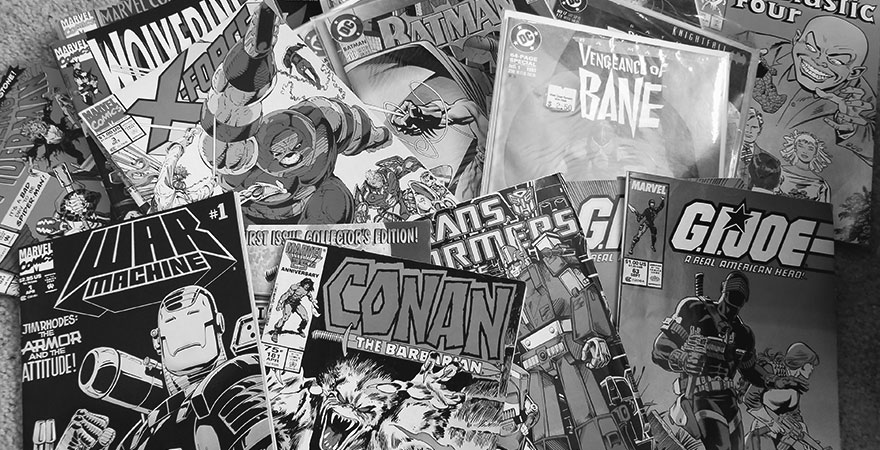1940s Comic Books and How They Relate To World War II and Propaganda
Throughout the Second World War, comic books were heavily used as propaganda to influence children, inspire citizens, and inform soldiers.
Unlike today, where the comic book superheroes represent safe, family entertainment, comic books from the 1930s and 1940s were viewed as crude lowbrow entertainment for children and unsophisticated adults.
Because of this, the books were uncensored, and you could print and sell comics anywhere—in the grocery stores, drugstores, newsstands, bus stations, classrooms, and even waiting rooms.
Why was the U.S. government interested in comic books?
One of the primary reasons the government used comic books as propaganda was because comic books were extremely popular with the army. The army bought the books to entertain the troops and help with battle illiteracy.
At the start of the war, 15 million comics were published every month, but two years into the war, the number grew to 25 million books.
The consequence of this is many service members were hooked on the comic book characters and storylines.
With many military men hooked on comic books, propaganda supporting the war effort was accurately directed at the right audience.
In 1942, the advertising research foundation found that the most read section of newspapers was comics. A later study by the market research company found that over half of the American population read comics.
The government noted this and had the Bureau of Intelligence do research for the Office of War Information (OWI) and find out how they could use and sell comics to help the war effort.
The bureau of intelligence noted that comics were uncensored, and propagandists could use levels of racism and violence. The cartoons were crude, meaning publishers could get away with vicious imagery.
This became a significant asset for the government, as it could effectively get its message into print without raising suspicion.
How comics were used as propaganda
The U.S. government hired famous artists, or those getting started in military publications, to promote the war efforts. Popular artists include:
Will Eisner illustrated the army manuals using the character Joe dope to show the military what not to do while in war.
Milton Caniff created a pocket guide to china with comic illustrations teaching the military how to differentiate Chinese from Japanese people.
Disney created pamphlets, cartoons, and even comics to promote the military.
Ben Roth put out a comic book aimed at Filipinos, trying to convince them how evil the Japanese were.
Throughout the war, superheroes such as Captain America, Superman, Robin, Spiderman, and others were heavily used to help the war efforts in fighting and delivering supplies, stopping spies, and any other thing possible to help the soldiers in the war.
Comic books weren’t unique to the U.S.
The comic book idea wasn’t unique to the U.S.—other countries also used them. For example, Germany and England put out comics aimed at French readers to convince them they were ahead of the war and how likely they were to win.
Germany also released comics for Portugal, trying to convince them to join them in the war.
Japan also created a comic suggesting that they would bring all the Asian nations to prosperity if they won the war.

